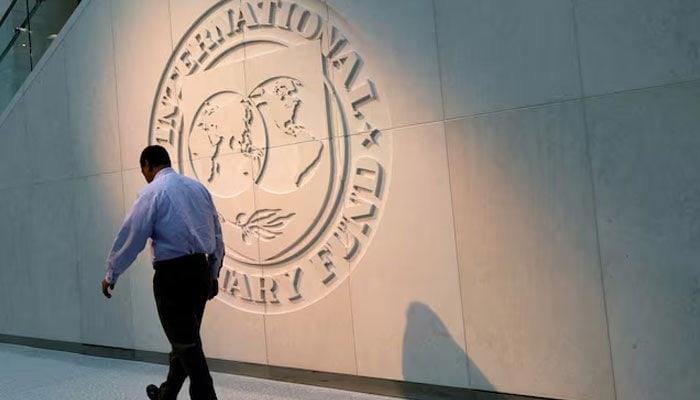
- Pakistan’s ability to repay its debts depends on certain factors: International Monetary Fund.
- The International Monetary Fund says Pakistan needs to repay $18.8 billion in foreign debt this year.
- Global Lender Sponsored Program Fully Funded for 12 Months.
ISLAMABAD: The International Monetary Fund has described Pakistan’s ability to repay external debt as fragile, while estimating that the country’s external financing requirements have swelled to $62.6 billion over three years under the Extended Fund Facility (EFF). News I mentioned.
If external financing needs are expected for a five-year period – from 2024-2025 to 2028-2029 – they will rise to $110.5 billion.
The International Monetary Fund experts’ report estimates the country’s external financing needs at about $18.813 billion for the current fiscal year, $20.088 billion for the period 2025-2026, and $23.714 billion for the period 2026-2027.
According to IMF figures, demand for financing will not decline even after the end of the three-year program. In 2027-2028, its value will reach $24.625 billion, and in 2028-2029, its value will reach $23.235 billion.
The International Monetary Fund issued a warning, saying Pakistan’s ability to repay debt was subject to “significant risks” and was “highly dependent” on timely policy implementation and external financing.
With demand-related purchases, the Fund’s exposure to SDRs will reach 6,816 million (336% of quota) by September 2024.
“Exceptionally high risks – particularly resulting from high public debt and overall financing needs, low aggregate reserves and social and political factors – could jeopardize policy implementation and erode repayment capacity and debt sustainability,” he added.
Restoring fiscal and external sustainability is critical to ensuring Pakistan’s ability to repay the Fund. This depends on strong and sustained implementation of policies, including, but not limited to, fiscal consolidation and external asset accumulation, as well as critical reforms to enable stronger and more resilient economic development.
Regarding external financing, the IMF says multilateral disbursements are expected to reach $14 billion over FY25-28 (including $7.1 billion from the World Bank and $5.6 billion from the Asian Development Bank) with creditors holding on. The major players are fully exposing their risks through new financing activities.
Modest access to new short-term loans from commercial banks is expected over FY25-2026, with a gradual return to bond markets assumed in mid-FY27, reflecting restored policy credibility.
The IMF-sponsored program is fully funded, with firm commitments for the first 12 months and good prospects thereafter. Committed financing for FY25 includes $16.8 billion in existing short-term financing and $2.5 billion in additional commitments, including from China, Saudi Arabia, the Asian Development Bank and the Islamic Development Bank.
The Pakistani authorities have received firm commitments from key bilateral partners (at a minimum) to maintain their current exposures throughout the programme, including renewal of existing short-term commitments, which will contribute to meeting financing needs in the remaining period.
Loans from foreign commercial banks totaling $6.6 billion, which were renewed during the 2019 EFF and 2023 SBA, are also expected to continue to be extended during the new program.
These commitments, together with those of multilateral institutions, provide the necessary financing guarantees.
However, funding risks remain high and ongoing monitoring will be needed to ensure appropriate and timely funding during program reviews.
According to Topline Securities brokerage chairman Muhammad Sohail, Pakistan’s total financing requirement for FY25 is $18.8 billion, the lowest level in nine years according to IMF data.
The average total financing requirement over the past nine years has remained at $25 billion. This goes against the popular perception that Pakistan will have to pay a record high amount in the next few years.
“The significant decline in total financing requirements for FY25 is due to the current account deficit of $3.6 billion and relatively lower premiums in FY25 to $15.2 billion.
Likewise, over the next three years (FY25-28), the IMF has reduced Pakistan’s total requirements by a cumulative amount of US$4.2 billion and over the next two years by US$5.2 billion due to an expected decline in the current account deficit.
